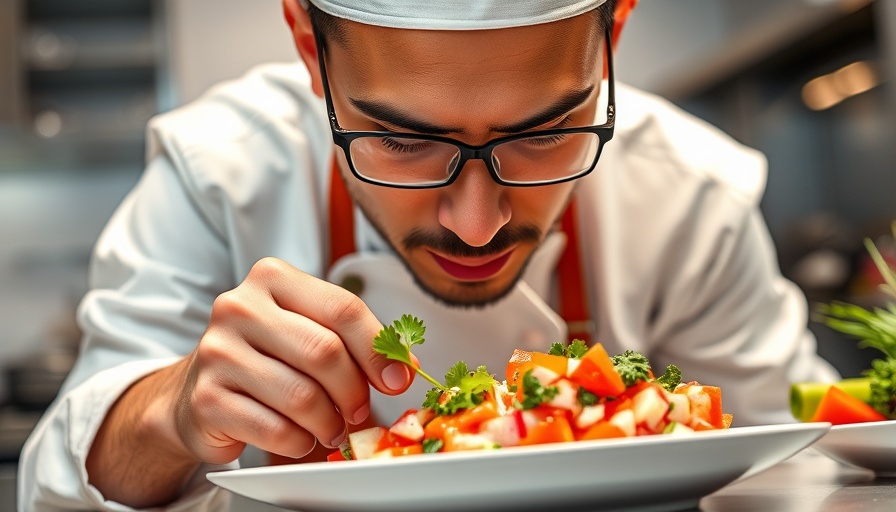
Discover the Charm of Authentic Ceviche Peruano
When you think of Peruvian cuisine, one dish undeniably stands out: ceviche. Today, we're diving into the vibrant world of ceviche mixto, a quintessential Peruvian dish celebrated not only for its fresh flavors but also for its rich history and cultural significance. As we explore this delightful seafood medley, let’s highlight why it's an essential offering for any Peruvian restaurant.
In CEVICHE MIXTO, the discussion dives into the art of preparing this iconic dish, exploring key insights that sparked deeper analysis on our end.
Ingredients and Preparations: What Makes It Special
Chef Victoriano brings us a practical kitchen demo, using carefully selected ingredients from authentic sources, such as the Monterrey Fish Market in San Francisco. The essence of great ceviche lies in its freshness. The combination of fish, octopus, squid, and shrimp, intertwined with a zesty leche de tigre, creates a dish that’s not only appealing but also generous in servings—perfect for sharing among four people.
Victoriano emphasizes the importance of knowing how to handle the seafood. From cooking octopus to blanching squid, there are essential techniques that ensure the best texture and flavor. His tip to freeze octopus before cooking is enlightening for restaurant owners aiming for consistency in taste and quality.
Why Shared Meals Matter in Peruvian Culture
At its core, ceviche mixto isn't just food; it's a social experience. Sharing this dish represents hospitality and community, two pillars of Peruvian culture. For restaurant owners, mastering the art of ceviche can create memorable dining experiences that keep customers returning, eager for not just the flavors but the warmth of a shared meal.
Incorporate Tradition: Ceviche Beyond the Basics
While ceviche mixto shines brightly, it isn't the only dish that can elevate a menu. Pairing it with classics like lomo saltado, aji de gallina, or even anticuchos can enhance the culinary journey. These traditional Peruvian dishes complement the ceviche and serve to entice diners looking for a true taste of Peru. By showcasing a variety of flavors, restaurant owners can elevate their dining experience and appeal to diverse preferences.
Appealing to the Modern Diners: Trends to Watch
Today's diners crave authentic experiences alongside innovation. Incorporating seasonal ingredients or twists on pure classics can lure in enthusiasts while maintaining the integrity of Peruvian cuisine. Consider offering fusion options or unique variations of ceviche that align with contemporary food trends, making it a hit with younger audiences.
Conclusion: Embrace the Ceviche Craze
The love for ceviche peruano transcends mere taste; it's about connection, culture, and history. For Peruvian restaurant owners, ensuring that this dish gets its rightful place on the menu is essential for staying true to Peruvian culinary heritage while drawing in the evolving clientele. If you’re curious about creating your ceviche mixto or want to innovate your menu further, why not dive into these authentic Peruvian recipes? Your customers will surely appreciate the effort!
 Add Row
Add Row  Add
Add 




Write A Comment